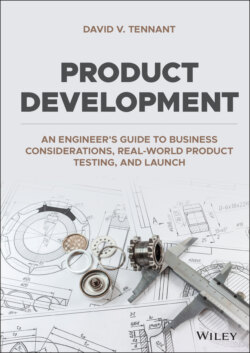Читать книгу Product Development - David V. Tennant - Страница 19
The 1st P – Product
ОглавлениеIt is not unusual for a Marketing Manager (sometimes called a Product Manager) to have the leadership role in the development of products and services. This will become apparent as our discussion unfolds.
Obviously, to have sales a company needs to have a product that has demand in the marketplace. The market is constantly churning with established products being bumped by newer products. Perhaps the newer product is cheaper, has better features, or has captured the imagination of the buying public. History is littered with products that were successful but ultimately replaced by a competitor.
All products exhibit a lifecycle. Figure 2.2 shows a typical product lifecycle. Notes about the product lifecycle:
Figure 2.2 Product Lifecycle. Lumen Learning, viewed 15 February 2021. https://courses.lumenlearning.com/clinton-marketing/chapter/reading-stages-of-the-product-life-cycle/.
Development stage –
Product/project is funded, and design of prototype starts
Prototype put through testing, and data collection
Review of data; evaluation of results
Changes in design and more testing
Final product handed over to manufacturing or external group for production
Introduction stage –
The product is new to the market and demand will increase with time
The cost per unit (or customer) is high
Few if any competitors
Sales are low and the product may be a money loser during the introductory stage
Growth stage –
Sales and revenue increase; the product is taking off in the marketplace
Competitors are becoming aware of your activity and may start to develop a competing product
Cost per unit (or customer) begins to decline
Profit margins increase
Maturity stage –
Sales, revenues, and profits peak
Cost per unit (or customer) is at the lowest point
Competitors are now actively nipping at your heels
Decline stage –
Sales and revenue decline, leading to a decline in profit margin
Cost per unit (or customer) is still low, but may rise with fewer units sold
Competitors start to fall away. A few will remain, but with a reduced market there are less sales and therefore profits to share. The product may become stable with steady sales but will not see the heavy growth or revenues seen in the growth stage.
